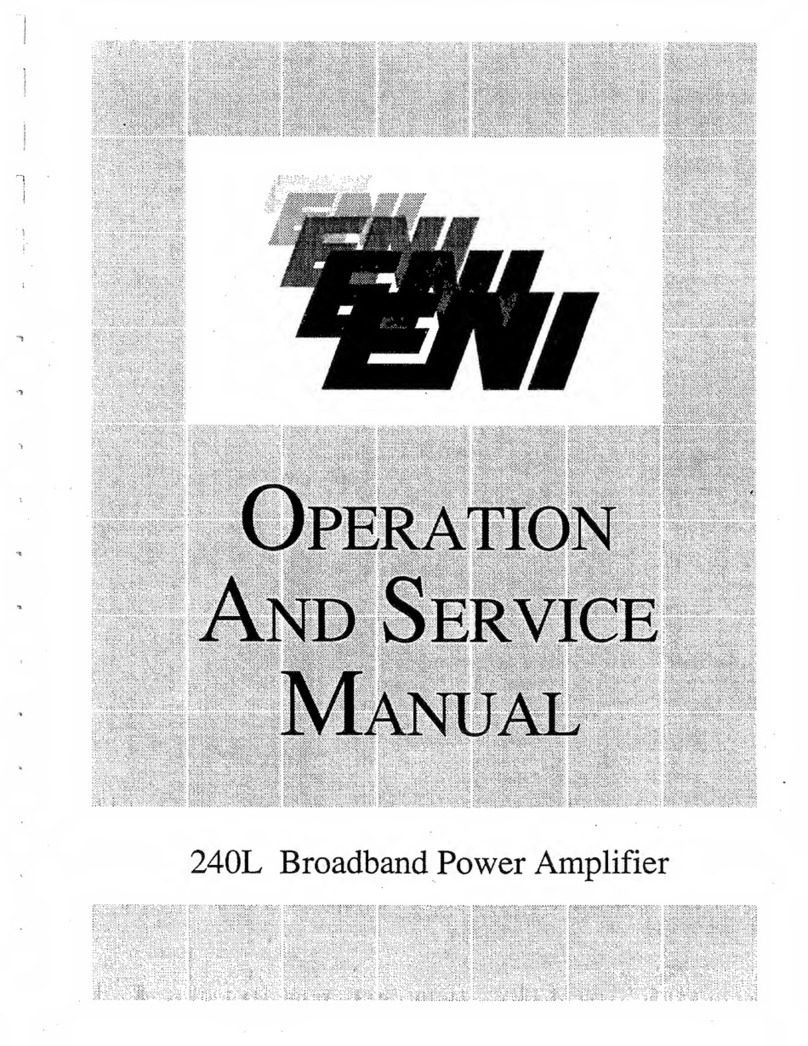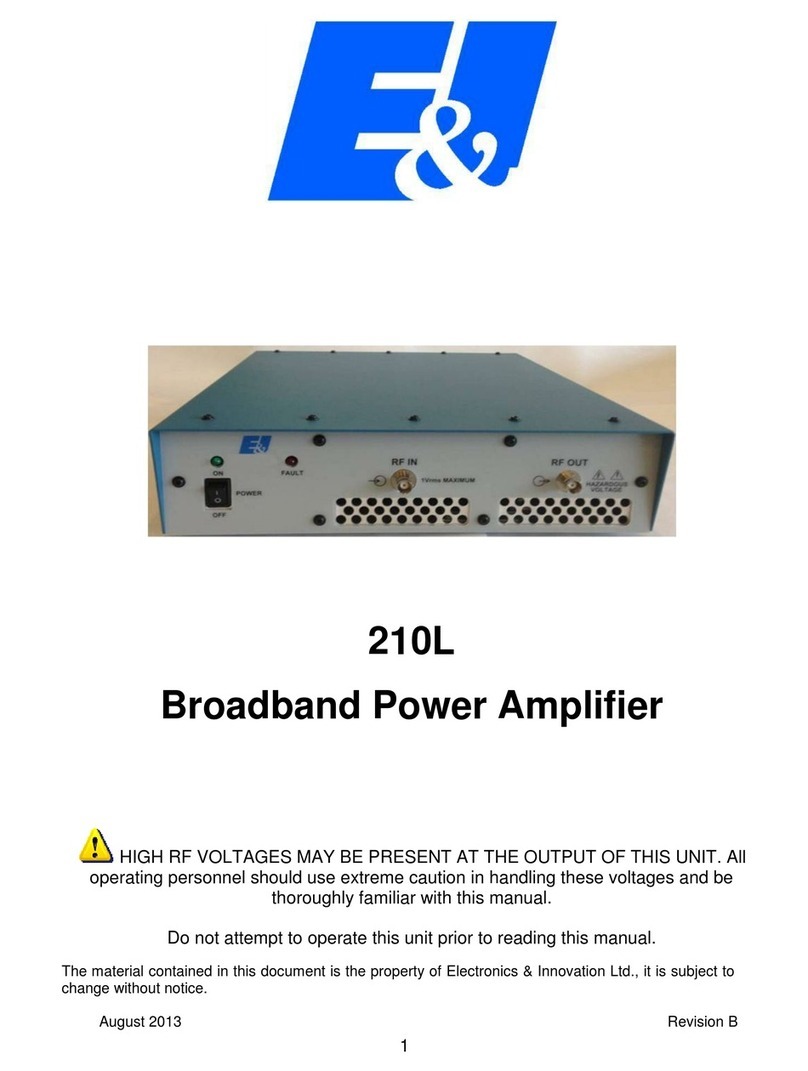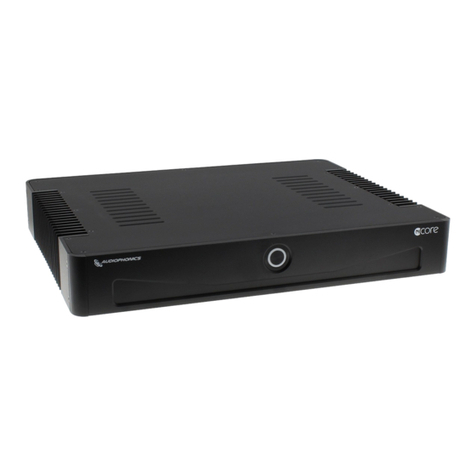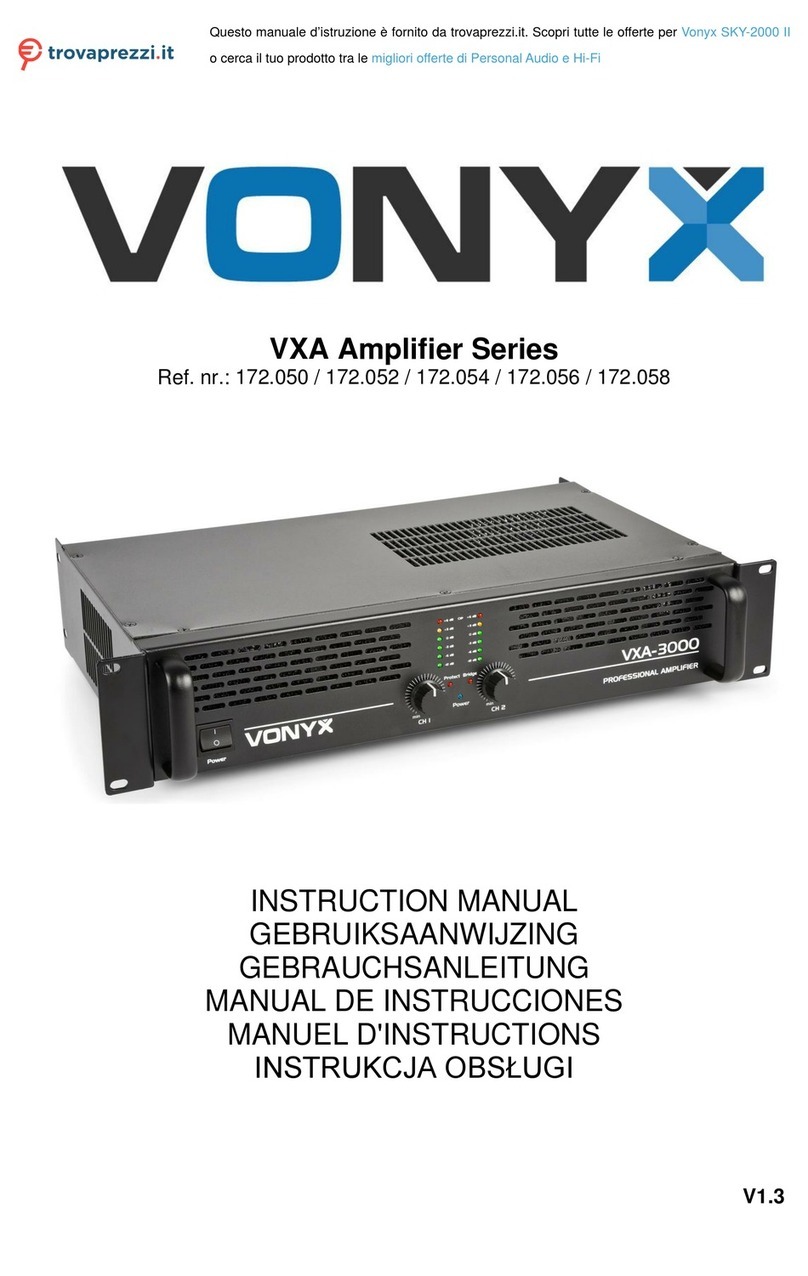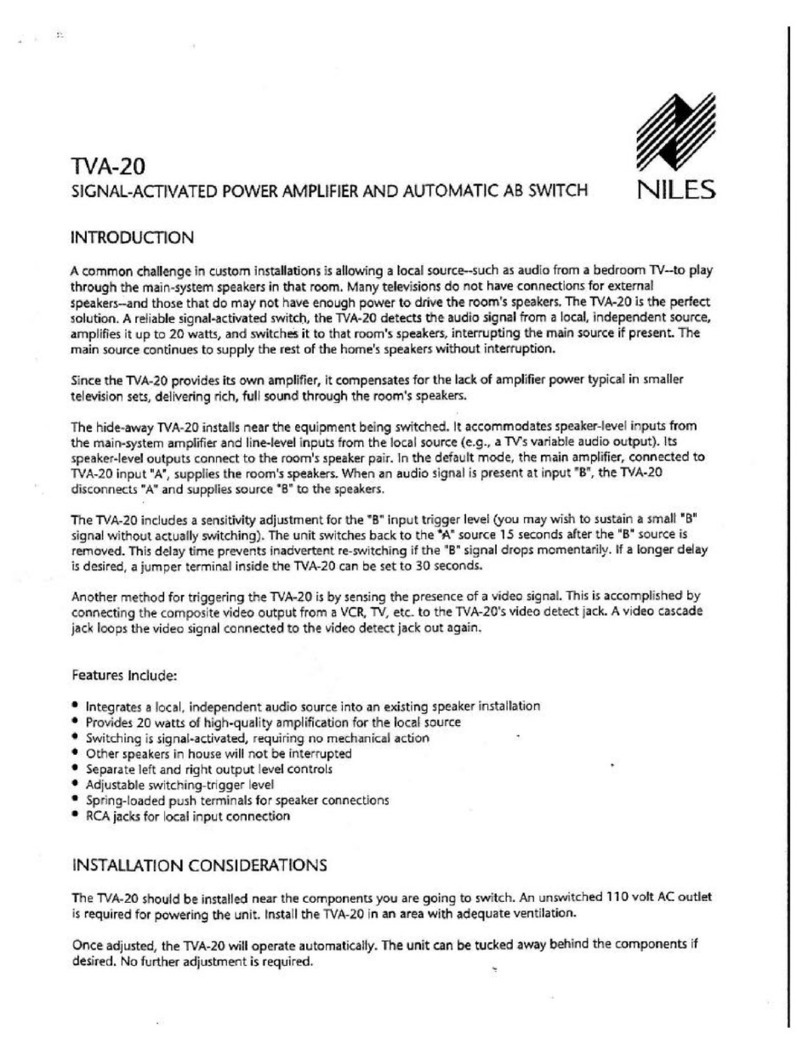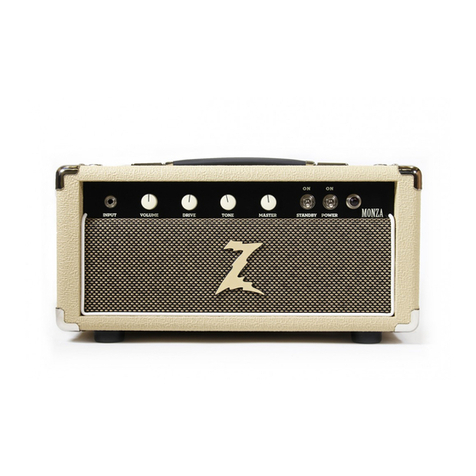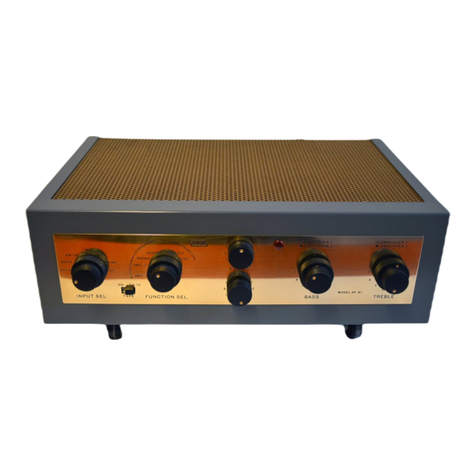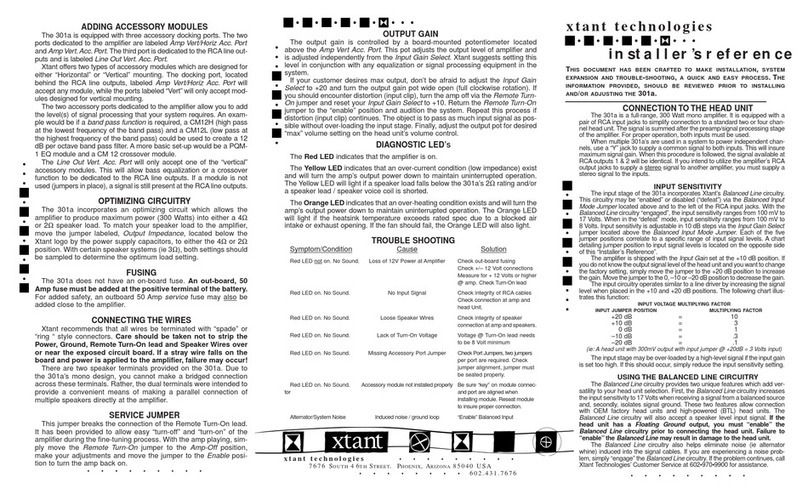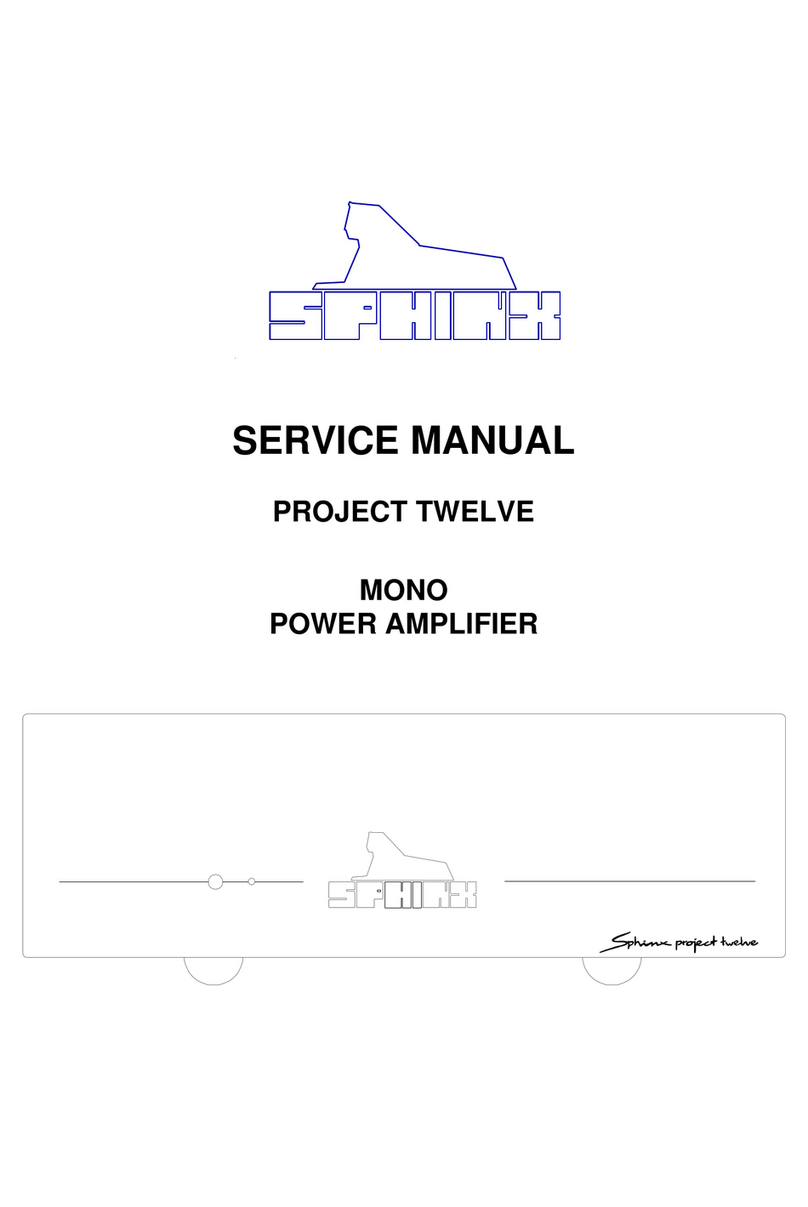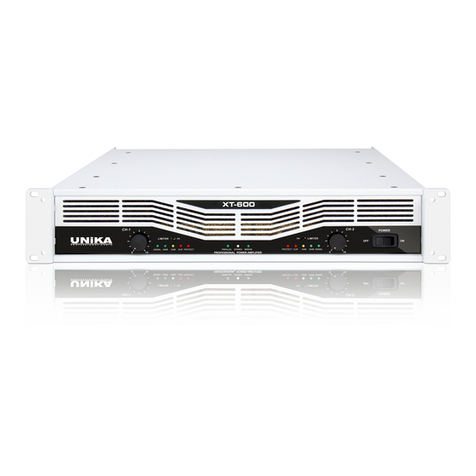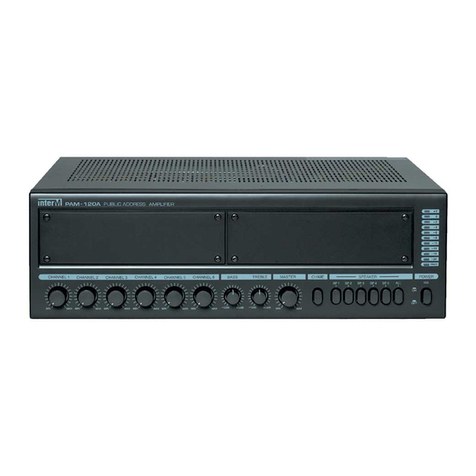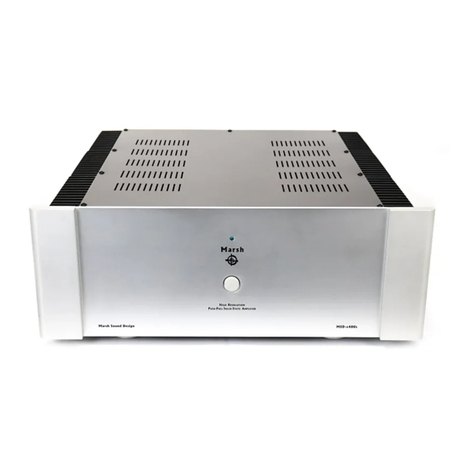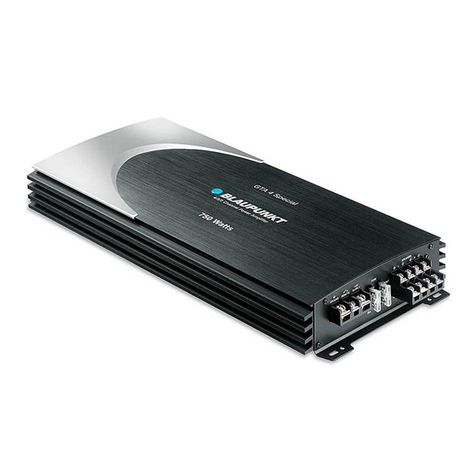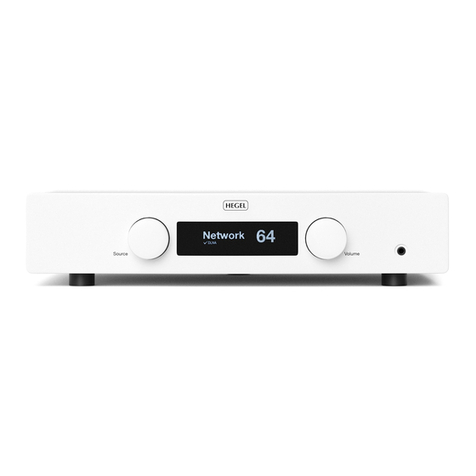Eni 3100LA Training manual

Copyright © 19^ tiy resor.

WARRANTY
Electronic Navigation Industries, Inc. warrants each instrument to be free from defects in material
and wortcmar«hip. Our liability under this warranty is limited to servicing and repiacing any defective
parts for aperiod of one (1) year after delivery to the original purchaser.
When warranty service is required, the Instrument must be returned transportation charges pre-
paid to the factory or our authorized service facility. If, in our opinion, the fault has been caused by
misuse or abnormal conditions of operation, repairs will be billed at cost. In this case, an estimate
will be submitted before the work is started.
There are no other warranties expressed or implied, Including any warranty of merchantibility or
fitness. Seller shall not be responsible for any incidental or consequential damages arising from any
breach of warranty.

Paragraph Page
CHAPTER 1GENERAUNFORMATION M
1.1 Introduction 1-1
1.2 Specifications 1-1
1.3 Instrument Identification 1-1
CHAPTER2 PREPARATION 2-1
2.1 Initial Inspection 2-1
2.1.1 Mechanical Check 2-1
2.1.2 Claim for Damage 2-1
2.1.3 Perforn^nce Check 2-1
2.2 Preparation for Use 2-1
2.2.1 Power Requirements 2-1
2.2.2 Power Cable Ground
Protection 2-1
2.2.3 Cooling 2-2
2.3 Rack Mounting 2-2
2.4 Packaging for Reshipment. ..2-2
CHAPTER 3OPERATION 3-1
3.1 Functional Description 3-1
3.2 Control, Indicators and Conn. ,3-1
3.3 Operating Procedure 3-1
3.4 Precautions 3-1
CHAPTER 4PRINCIPLES OF OPERATION 4-1
4.1 General 4-1
4.2 Block Diagram Description. ..4-1
4.2.1 Driver Amplrfier Module
1A234) 3100LA-14401 .... 4-1
4.2.2 Power Amplifier Module (A166)
3200L-4732 4-1
4.2.3 Output Combiner Module
(A235)3100LA-14402.... 4-1
4.2.4 RF Voltmeter Module (A168)
3100LA-14403 4-3
4.2.5 Power Distribution
3100LA-12401 4-3
CHAPTER 5PERFORMANCE
TEST PROCEDURES 5-1
5.1 Performance Tests 5-1
5.1.2 Test Equipment Required 5-1
5.1.3 Gain and Gain Variation Test. 5-1
5. 1.3.1 Calibration of Set-Up 5-1
5. 1.3.2 Measurement Procedure 5-2
5.1 .4 RF Output Power Test 5-2
5, 1.4.1 Measurement Procedure 5-2
5.1.5 RF Output Distortion Test .. .5-2
Paragraph Page
5. 1.5.1 Measurement Procedure 5-2
CHAPTER 6TROUBLESHOOTING AND
REPAIR 6-1
6.1 Troubleshooting 6-1
6.2 Locating Faulty RF Module ..6-2
6.2.1 General 6-2
6.2.2 Isolating Amplifier Problem ..6-2
6.2.2. 1Output Combiner Test
IA235) 3100LA-14402 .... 6-3
6.2.2.2 RF Power Amplifier Module
Test (A1 66) 3200L-4732 ..6-3
6. 2.2.2.1 Bias Voltage Check 6-3
6. 2.2.2.2Low Power Sweep Test 6-3
6.2.2.2.3Measurement Procedure 6-4
6.2.2.3Driver Amplifier Module
(A234) 3100LA-14401 . ...6-4
6.2.3 RF Voltmeter (A168)
3100LA-14403 6-4
6. 2. 3.1 Alignment Procedure 6-4
6.3 DC Power Supply 6-4
6.3.1 General 6-4
6.3.2 Test Procedure 6-4
6.4 Disassembly Procedure 6-5
6.4.1 General 6-5
6.4.2 Tools Required 6-5
6.4.3 Removal of Cover 6-5
6.4.4 Driver Amplifier Heatsink
Assembly 3100 LA- 13405 .6-5
6.4.5 Power Supply Regulator
Board 3100LA-14404 .... 6-5
6.4.6 Output Combiner Module
(A235)3100LA-14402.... 6-5
6.4.7 Power Amplifier Heatsink
Assemblies 3100 LA-13403
&3100LA-13404 6-6
6.4.8 Power Supply Assemblies
3100LA-13406 6-6
6.4.9 Power Amplifier Module
(A166)3200L-4732.... .. 6-6
CHAPTER 7SCHEMATICS AND PARTS
LIST 7-1
7.1 Schematic Diagrams 7-1
7.2 Parts List 7-1
7.3 List of Manufacturers 7-1
7.4 Ordering Replacement Parts .7-1

Figure Page
4-
1Block Diagram 4-2
5-
1Gain and Gain Variation Test Set Up 5-1
5-2 RF Output Power Test Set Up 5-2
5-
3RF Output Distortion Test Set Up 5-2
6-
1Low Power Sweep Test Set Up 6-3
7-
1RF Power Amplifier Schematic Diagram 7-3
7-2 Power Distribution 3100LA-12401 7-4
Table Page
1-
1Specifications 1-2
2-
1Line Voltage Connections 2-1
3-
1Front and Rear Panel Devices 3-2
6-1 Troubleshooting Guide 6-1
6-
2Regulator Connections 6-5
7-
1Replacement Parts List 7-5
7-2 Glossary of Abbreviations 7-3
7-3 List of Manufacturers 7-9

CHAPTER 1
GENERAL INFORMATION
1.1
INTRODUCTION
The ENI Model 3100LA is an all
solid state amplifier which has a
flat frequency response from
250kHz to ISOMKz. it provides up
to lOOW of linear power with low
harmonic and intermodulation
distortion. Gain is 55dB
nominal, with variation of less
than +_i.5dB over the entire
frequency range. Input and
output impedance are SOohms and
the unit may be driven to full
power output by most RF
synthesizers, signal generators
and swept signal sources.
The ENI Model 3100LA will deliver
its rated power output into any
load impedance, regardless of
match. Built-in protection
circuitry will absorb the power
reflected from amismatched load
without causing failure or
oscillation.
Output RF voltage is displayed on
the front panel meter. The Model
3100LA is packaged for bench
mounting and is shipped with rack
mounting adapters. Its integral
power supply and cooling operate
from a100/ 107.5/ 1150/ 120 or
200/ 125/ 230/ 240VAC 50/60HZ
main supply.
The Model 3100LA will raise the
power level of signal sources
and generators without requiring
tuning or bandswitching. The
Class Alinear circuitry will
amplify signals of AM, FM, SSB,
TV and complex modulations
limited only by their peak input
and bandwidth, with minimum
distortion.
1.2 SPECIFICATIONS
Physical and electrical
specifications are listed in
Table 1-1.
1.3 INSTRUMENT IDENTIFICATION
Each amplifier is identified by
aserial number tag on the back
panel of the unit. Both the
model number and the serial
number should be given in any
correspondence with the company.

TABLE 1-1.
FREQUENCY COVERAGE:
GAIN
GAIN VARIATION
MAXIMUM LINEAR OUTPUT:
HARMONIC DISTORTION:
SPECIFICATION
250kHz to 150MHz
55 dB Nominal
±1.5 dB
More than lOOW from 250kHz to
150MHz. More than 50W from
150MHz to 180MHz and from lOOkHz
to 150kHz.
All harmonics more than 24 dB
below main signal at 75W output.
TYPICAL 3RD ORDER INTERMODULATION
INTERCEPT POINT:
INPUT/OUTPUT IMPEDANCE:
INPUT VSWR:
OUTPUT VSWR:
NOISE FIGURE:
STABILITY:
PROTECTION:
OUTPUT METERING:
POWER REQUIREMENTS:
OPERATING TEMPERATURE:
SIZE:
WIEGHT:
CONNECTORS
:
+59dBm
50 ohms
Less than 1.5
Less than 2.5
lOdB Maximum
Unconditionally stable; unit
will not oscillate for any
condition of load and source
impedance
.
Unit will withstand more than 16
dB of overdrive (input signal of
IV RMS) for all output load
conditions.
Average reading voltmeter
calibrated in RMS volts for a
sine wave with an accuracy of
+4% of full scale 0-100 volts;
also calibrated in Watts into 50
ohms (0-200W)
100/ 107.5/ 115/ 120 or 200/
215/ 230/ 240 VAC; +8%, 50-60HZ,
llOOW
0“ to +40”C
83/4 X17 X17 in.
22.2 X43.2 X43.2 cm
60 lbs; 27.3 kg.
RACK MOUNTING:
Type N
Adaptors Provided
T~2

CHAPTER 2
PREPARATION
2.1 INITIAL INSPECTION
2.1.1 Mechanical Check
If damage to the shipping carton
is evident, request the carrier's
agent be present when the
instrument is unpacked. Check
the equipment for damage and
inspect the cabinet and panel
surfaces for dents and scratches.
2.1.2 Claim for Damage
If the Model 3100LA is
mechanically damaged or fails to
meet specification upon receipt,
notify ENI or our representative
immediately. Retain the shipping
carton and packing material for
the carriers inspection as well
as for subsequent use in
returning the unit if necessary.
2.1.3 Performance Check
The electrical performance of the
Model 3100LA should be verified
as scpon as possible after
receipt. The following is a
performance check that is
suitable for incoming inspection.
a. Set the amplifier front
panel power switch to the
ON position and check that
the pilot light illuminates
and the fan motor is
operating normally.
b. Perform RF Output Power
Test, Section 5.1.4.
2.2 PREPARATION FOR USE
2.2.1 Power Requirements
The Model 3100LA requires a
50-60HZ, single phase, power
source capable of supplying
llOOW. The unit must be
adjusted to accommodate the
available AC line voltage. This
is accomplished by connecting
the jumpers to the correct
terminals of the terminal strip
TBl, in accordance with Table
2-1.
Terminal strip TBl is mounted on
the baseplate at the rear of the
unit and is accessible by
removing the four (4) #6-32
screws from the rear panel and
sliding it straight out.
Disconnect the line cord from
the power main when adjusting
the operating voltage. Failure
to connect jumpers to their
proper terminals may result in
severe damage to the instrument.
2.2.2 Power Cable Ground
Protection
To protect operating personnel,
the ENI Model 3100LA is equipped
with athree conductor cable
consisting of ablack hot line,
awhite common line, and agreen
chassis ground. Then using a
two prong adapter, the green tap
on the adapter must be connected
to earth ground.
2-1

Table 2-1. LINE VOLTAGE SELECTION CHART
Nominal
Line
Voltage
Jumpers AC
Hot
Black
AC
Neutral
White
White Black
lOOVAC 1-2 3-4 1 4
107.5VAC 1-2 5-6 16
115VAC 1-2 7-8 1 8
120VAC 1-2 9-10 110
200VAC 2-3 14
215VAC 2-5 Remove 16
230VAC 2-7 Jumper 18
240VAC 2-9 110

2-372-4

CHAPTE
OPERATI
3.1 FUNCTIONAL DESCRIPTION
The ENI Model 3100LA ts alinear Class Aamplifier
capable of Increasing the output of any sigrai gener-
ator, frequency synthesizer, sweep generator or labor-
atory signal source from 250 kHz to 150 MHz.
The Model 3100LA is completely protected against
dantage due to load mismatch provided dat the input
RF level does not exceed 1volt RMS or 1.4 volts p^k.
If the attached signal source Is capable of generating
substantially more than this input voltage, please use
caution in adjusting it. The Model 3100 LA will
saturate well before the maximum input voltage and
there will be no increase in output power at that point.
The 3100LA is unconditionally stable. Any
impedance can be connected to the input and output
of the amplifier, without causing oscillation,
The 3100 LA will deliver its rated power to any load
impedance regardless of match. Load mismatch will
cause RF power to reflect back to the amplifier. The
unit is designed to withstand 100 percent reflected
power (a pure reactance open or short circuit load will
cause 100 percent reflected power) continuously with-
out damage.
An output meter is provided to indicate the average
output voltage (calibrated in RMS) as well as the
power output when the unit is connected to a50 ohm
load. Since the meter responds only to average out-
put, the modulation characteristics of the input signal
must be taken into account when interpreting the
meter readings. For example, the amplifier may be in
saturation during the ON portion of apulse yet the
meter reading will be low due to the low duty cycle of
the pulse Input.
3.2 CONTROLS. INDICATORS AND CONNECT-
ORS
Front and roar panel devices are described in Table 3-1
.
3.3 OPERATING PROCEDURE
Refer to the following procedure as aguide to oper-
ating the Model 3100LA.
e. The input and output are connected via the front
panel type Nconr>ectors to the sigrial source and
load respectively.
b. The input signal should be increased gradually
while observing the output voltage on the output
RF voltmeter.
c. When the Model 3100LA is connected toa50
ohm load, the CW power output of the unit may
be read directly from the meter scale.
d. When the amplifier is connected to an arbitrary
or unknown load impedance, the following pro-
cedure will insure alow distortion power output.
1.Disconnect the output load cable from the
output type Nconnector of the Model 3100LA,
2. If the CW output voltage is less than 100
volts RMS, the unit is operating at low distor-
tion regardless of the load impedance.
3. Reconnect the output of the amplifier to the
load.
e. If the output of the amplifier is monitored by a
high frequency oscilloscope or spectrum analyzer,
the input signal may be increased until the point
of maximum undistoned power output is ob-
served.
3.4
PRECAUTIONS
a. The input and output of the Model 31 00 LA
should not be connected together. This will
cause oscillation ar>d may damage the input
preamplifier.
b. The Model 3100LA should not rerr>aln connected
to an antenrtf when the unit is not in use. If
thunderstorms are likely. It would be prudent to
earth grourKl the unit's case.
c. When the input signal voltage of the signal
source is unknown, insert an attenuator between
it and the Model 3100LA input.
3-1

DEVICE
Power Switch
Meter
Input Connector
-1 .FRONT AND REAR PANEL DEVICES
FUNCTI
Throwing toggle to “ON” position connects fan and power supply
to main power source.
Indicates output voltage and also power for a50 ohm load. The
rr>eter circuit responds to the average RF voltage and is calibrated
in RMS volts for asine wave. The voltage pick-off is mounted
directly behind the front panel at the output connector.
Type Nfor connection of the driving generator. Input imp>edance is
50 ohms, No more than 0.25 volts is required to obtain saturated
output. Up to 1.4 volts peak can be supplied without causing dam-
age; however, no additional power output can be expected.
Output Connector Type Nfor connection of amplifier output to load.
Holder required 3AG size, slow blow type fuse; 15A
Line Cord Three prong type plug with safety ground pin connected to cabinet,

4.1 GENERAL
The Model 3100LA achieves its high level of power
output by combining the power outputs of anumber
of individual transistor amplifiers. The hybrid combining
technique permits each amplifier to operate indepen-
dently of all the others and to supply its power output
contribution without regard to the other amplifier
stages, This isolation is afforded by ferrite loaded
transformer hybrids connected at the input and output
of each transistor pair.
Each amplifier module is designed to have an input
and output impedance of 50 ohms. Therefore, the in-
dividual modules can be disconnected and tested in-
dependently.
Highly linear Class Atransistors are used throughout
the amplifier. Their linearity is augmented by negative
feedback networks connected to each stage. The high
power output transistors have nichrome resistors de-
posited at their emitter terminals to increase linearity
and reliability.
The amplifier is powered by alow noise DC regulator
of dissipative design. Over-temperature protection is
built into the power supply and cooling fan.
4.2 BLOCK DIAGRAM DESCRIPTION
Ablock diagram of die entire Model 3100LA Is shown
in figure 4-1 .The electrical schematics are shown in
Figures 7-1 and 7-2. Input signal from the front panel
type Nconnector is fed to the driver amplifier module
<3100LA-14401). The driver has four K|ua( amplitude
and phase outputs. Each driver channd has atypical
gain of 28 dS and aminimum power output of 1.8
watte. The driver outputs are fed via coaxial cables to
the fcxjr power amplifier rrxxlules {3200L-4732).
Each power amplifier has again of 18 dB and Is capa-
ble of producing more than 35 watts of power at its
output. These outputs are summed and isolated from
each other In the output combiner (31CX)LA-14002). RF
output is fed into tee output type Nconnector and to
die RF voltmeter module E3100LA-14403). The RF volt-
meter module provides aDC signal to the front pane!
meter, proportional to the output level. The power dis-
tribution E3100LA-12401) provides cooling and DC
power to the entire unit. The five regulated power
supplies are each capable of supplying 26.4 volts at
acurrent of 5amperes.
4.2.1 Driver Amplifier Module
3100LA-14401
input RF signal is fed through connector J2 to the
base of low noise transistor Q1 through the atten-
uator resistors R1, R2 and R3. Additional amplification
is provided by tandem stages 02. 03, Q4, and Q5.
The power output of Q5 is then split through the
4-way hybrid splitter consisting of T2, T3 and T4.
The output power at each of the connectors J3
through J6 are matched in amplitude and phase,
4.2.2 Power Amplifier Module
3200L-4732
The input signal is fed through connector J7 attenu-
ated by resistors R1 ,R2, and R3 and matched by
transformer T1 and capacitor C1 to the base of the
driver transistor 01 .The output of Q1 is split into
four equal phase and amplitude signals by transformers
T2, T3, and T4. Transformers T5 through T8 match
tee output of the driver stage to the bases of the out-
put power transistors 02 through 05. The equal am-
plitude and phase outputs of these transistors are
coupled through afour-way hybrid combiner consist-
ing of transformers T13, T14 and T15 and matched
by transformers T16 arwl capacitor C27 to the output
connector J1 1
.
4.2.3 Output Combiner Module
3100iA'14402
RF Power is injected into the combiner at connectors
J15 through J18 and is summed by hybrid transform-
ers T2 and T4. Transformer T1 and capacitor C1
match the output impedance of the combiner to 50
ohms. Resistors R1, R2 and R3 will dissipate power
only if the power amplifiers are unmatched or a
failure has occurred. The total summed output of ait
four RF signals is available at connector J19, the
final output of the combiner.
4-1

P.A, -^EATSiNK ASSY.
5i00LA-!3403
!
Ift A. M£ATS!NK
i5iOOLA-i3*04

4.2.4 RF Voltmeter Module
210mj^-14403
Resistors R1 ,R2 and R3 make up ahigh impedance
voltage divider which is connected to the RF output
voltage at the 3100LA output connector J21 .Afast
switching hot carrier diode D1 rectifies the RF voltage
from the divider. Agimmick (etched on the PC board)
compensates for the high frequency roll off of the
diode D1 .Resistors R4 and R5 and capacitor C3 filter
the rectified RF and convert it to DC which is fed to
the front panel meter.
4.2.5 Power Distribution
3100LA-12401
The AC power is distributed from terminal block TBl
to the power transformer T1 ,The white and black
Jumpers on TBl allow selection of line voltages for
the primary of transformer T1 (See power connections
section 2.2.1 ). The secondary of T1 supplies voltage
to three full wave bridge rectifiers CR1 ,CR2, and
CR3 on the baseplate assembly (3100LA-13401 ).
The output of each rectifier Is connected to capacitor
Cl ,and C3 respectively. The outputs of CRT
,
CR2 and CR3 are fed to the collectors of Q1 ,Q2 and
(33 located on the power supply assemblies (3100LA-
13406). These power supply assemblies form atotal
of five series pass regulators of the dissipative type
and are connected to five integrated circuit voltage
regulators, IC1 through IC5, located on the power
supply regulator board (A236) 3100LA-14404. The
voltage output of each supply Is adjusted by potentio-
meter A235 R21 through A236 R25. Each of the
five fx>wer supplies has its own short circuit protection
adjusted by potentiometer A236 R16 through A236
R20 and are factory set.
4-3/4-4

CHAPTER 5
PERFORMANCE TEST PROCEDUR
B.1 PERFORMANCE TESTS
E.1.1 Genera!
There are three tests required to check the operation
and performance of the Model 3100LA. These tests
are as follows; the gain and gain variation test, the RF
cxitput power test and the RF output distortion test.
5.1.2 Test Equipment Required
The following test equipment is required for accomplish-
ing the Model 3100LA performance tests. Equivalent
substitutes for recommended models may be used.
a. Oscilloscope -Tektronix Model T921
b. Sweep /Signal Generator -Wavetek 2001
c. RF Generator/ Sweeper -HP-8601A
d. 50 ohm Detector -HPS471A
-or Wavetek D1 51
e. Anenuator, 30 dB, 500 Watts -Bird 8325
f. Attenuator, 30 dB, 200 Watts -Bird 8322
g. Attenuator, 10 dB, 20 Watts -Narda 766-10
h. Power Meter -HP 435B, 8482B power sensor
with matching 30dB attenuator
i. Spectrum Analyzer -HP 140T Display Unit
-HP 8554L Spectrum
•Analyzer-RF Section
-HP8552A Spectrum
-Analyzer-1 FSection
5.1.3 Gain and Gain Variation Teat
The purpose of this test is to verify the g»in arid gain
flatness versus frequency of the McKie! 31001A.
5. 1.3.1 CALIBRATION OF SET-UP
a. Set up test equipment as sho¥\m in figure 5-1
.
Figure 6-1. Gain and Gain Variation Test Set-Up
b. Set the oscilloscope to DC, time/ CM to Ext, X,
and vertical gain to 10 mV/CM.
c. Set Sweep/ Generator to the S/S mode with
start frequency at 1MHz and the stop frequency
at 150 MHz.
d. Disconnect the Mode! 3100LA from the set-up
and connect the Sweeper/ Generator RF output
directly to the 10 dB attenuator.
e. Adjust the output level of the Sweeper/ Gen-
erator for full vertical deflection of the oscillo-
scope face.
f. Calibrate the scope face to show 3dB in 1dB
steps and mark the traces with agrease pencil.
g. Return Sweep/ Generator output level to full
deflection. Rotate the step attenuator on the
Sweep/ Ger>erator (CCW) so that the output is
r^uced by 50 dB. Reduce the output an addi-
tional 5dB with the vernier control.
h. Reconnect Model 3100LA into the test set-up of
Figure 5-1
,
i. Repeat steps la) through (h) using the HP8601
A
Sweep/ Gerwrator with start frequency at 250
kHz and stop frequency at 1MHz.
5-1

5.1 .3.2 MEASUREMENT PROCEDURE
fi. Turn on Model 3100LA power switch.
b. Observe the gain versus frequency sweep on
the oscilloscope.
c. The average gain should be 55 dB (within 2dB).
d. The gain variation should be within the 3dB
markings as shown on the oscilloscope face.
observing the power meter. Note that at every
frequency down to 250 kHz the power output is
greater than 100 watts.
5.1 .5 RF Output Distortion Test
The purpose of this test is to verify that the harmonic
distortion of the Model 3100LA and hence its linearity
is within specified limits.
5. 1.5.1 MEASUREMENT PROCEDURE
S.1 .4 RF Rower Output Test 8. Set-Up the test equipment as shown in Figure 5-3.
The purpose of the RF power output test is to verify
that the Model 3100LA will deliver its rated power
output over the frequency range of 0.25 MHz to
150 MHz.
5.1 ,4,1 MEASUREMENT PROCEDURE
a, Set-up the test equipment as shown in Figure 5-2.
MODEL 3100LA
'
j
;1
j
i
'
!\“
LO
1
,
'=‘^1 1
!JE_J
'tE^
i’.’E'E =
Figure 5-2. RF Output Power Test Set-Up
MODEL 3100LA
LxJ j
c.1
•N cj^!
Lj
J^_
N.'. -'•'•-A.'TI—
:j
1^‘rtc •
ic-1. 1;;l. i
>—#-c
1Vi- fc
c.K •c-
RF-
I'.
CTKjv
Figure 5-3. RF Output Distortion Test Set-Up
b. Set the power meter to .10 wan range. With
the 30 dB serl« attenuator, this corresponds to
afull scale deflection of 100 watts.
c. Set the Generator/ Swe^jer to CW and frequency
to 150 MHz.
b. Set the power meter to the .3 watt range.
With the 30 dB series attenuator, this cor-
responds to afull scale deflection of 300 watts.
c. Set the Sweep/ Generator Wavetek Model 2001
to the CW mode, level to -f 10 dBm and fre-
quency to 150 MHz.
d. Slowly decrease frequency while c^jserving the
power meter. Note that at every frKjuency down
to 1.0 MHz the power output is greater than
100 watts.
e. Using the HP model 8601 ASweep/ Generator
in the CW mode, level at +10 dBm, frequency
set at 1MHz, slowly decrease frequency while
d. Adjust the Generator/ Sweeper output level so
that the output pov^r indicated on the calori-
metric power met»- is 75 watts.
e. Disconnect the cable from the power meter and
connect to the Spectrum Analyzer through a30
dB attenuator.
f. Observe that ail harmonics are at least 24 dB be-
low the fundamental.
g. Repeat steps a. through f, with the generator
set at 10 MHz, 30 MHz, 80 MHz, 110 MHz,
and 130 MMz, in succession.
h. Repeat steps a. through f. with HP model 8601
A
Swreep/ Generator set at 250 kHz.
5-2

LE SHOOTING
6.1 TROUBLESHOOTING
The first step In isolating amalfunction is to review
the conditions ur>der which the symptoms were ob-
served and check that it was not caused by the ex-
terrtal cabling or associated test equipment. Before
proceeding to the detailed test procedure, acomplete
visual inspection of the 3100LA should be accomplished.
Check for burnt or discolored components and broken
wir^ and note any details which might localize the
malfunction.
Commonly found symptoms together with their prob-
able cause and troubleshooting recommendations
are listed in the Troubleshooting Guide, Table 6-1
.
TABLE 6-1. TROUBLESHOOTING GUIDE
SYMPTOM RECOMMENDATIONS
Power Lamp does not light Burned out bulb Check for 26.4 volts across bulb.
Defective power supply Perform test in section 6.3.2.
Thermal switch open If TS1 contacts do not close after
unit has cooled, replace thermal
switch.
Defective power switch Replace switch (SI ).
Blown fuse Replace fuse with 15 amp slo-
biown 3AG.
Power Lamp dim Power supply out of adjustment Perform power supply adjustment
section 6.3.2.
TB3 wired incorrectly Check section 2.2.1
.
Blown fuse Defective power supply Perform test in section 6.3.2.
Wrong fuse Verify that 15amp slo-blown 3AG
Fuse is installed.
Defective line cord or AC wiring Visually inspect for signs of insula-
tion breakdown.
No RP output or gain Broken input or output type Nconnector Visually inspect connectors for
broken pins.
Defective input or output internal cables Visually inspect cables at input and
output connectors.
6-1

TABLE 6-1 .TROUBLESHOOTING GUIDE (continued)
SYMPTOM PROBABLE CAUSE RECOMMENDATIONS
Low RF Output or Gain Defective input cables Visuaity ir\spect cables.
Faulty Power Supply Adjustment Perform power supply adjustment
section 6.3.2.
Defective RF Amplifier Module Perform procedure for locating
faulty RF mcxiule, section 6.2.
Excessive Distortion Defective Power Amplifier Module Perform procedure for locating
faulty RF module, section 6.2.
Amplifier Overheating Defective Fan Check that fan is operating property.
Ambient air is above specifications. Measure the ambient temperature.
Defective Power Supply Perform test in section 6.3.2.
Incorrect Front Panel
Meter Indication
Improper Calibration or defective RF
voltmeter board (A168)
Perform RF voltmeter adjustment
section 6.2.3,
Defective Meter Replace Meter
Meter reads up scale with
input and output cables
removed
Sticking meter movement
Unit oscillating because of loose or
defective internal coax cable connections.
Replace Meter
Tighten all RF connectors
Excessive ripple on gain
versus frequency sweep
of amplifier
Ripple on power supply Perform DC power supply test,
section 6.3.2.
6.2 LOCATING FAULTY RF MODULE
6.2.1 General
The input and output impedance of each of the RF
modules in the Model 31 OOLA is 50 ohms. Therefore,
they can be disconnected from each other at any
point and tested independently. The following sec-
tions provide amethod of locating afaulty RF module.
6.2.2 isolating Amplifier Problem
a. Set up the test equipment as shown in Figure
5-2 for RF power output test.
b. Set the RF generator to CW, the frequency to
10 MHz and output level to 0dBm. If the Model
3100LA output power level is less than 100
watts, as indicated on the power meter, a
faulty RF module may exist.
c. With an output of 100 watts or less, disconnect
Uie coaxial caWe from J1 1of the power ampli-
fier module (3200L-4732) and observe the out-
put power of the 3100LA as indicated on the
power meter. The power will drop 44% !±4%)
for aproperly functioning power amplifier. Re-
connect the coax cable to J1 1and remove the
coax cable from J12. Observe the power drop.
Repeat the identical procedure for J13, and J14
6-2

6.2.2.
2.1
Bias Voltage CheckIf the pK)wer output drops an equal amount (within
4%) as each cable is removed the fault is in either
the four way output combiner (3100LA-14402) or the
driver amplifier section (3100LA-14401 ). Perform tests
in section 6.2.2. 1and 6.2.2.3.
If the output power does not drop or drops less than
normal, as each of the cables is removed, the fault is
in the power amplifier associated with that cable. Per-
form teste in section 6.2 .2 .2.
6.2.2.
1
FOUR WAY COMBINER TEST
3100 LA-14402
Set the low level sweep/sigr^! generator to cover 1
to 150 MHz. Connect the output of the sweep gener-
ator to the output connector J19,
Connect the RF detector to jack J1 5on the output
combiner and three 50 ohm dummy loads to con-
nectors J16 through J18. Measure the total loss
through the combiner. If the measured response is
6.3 ±0.3 dB, then the J15 channel is operating
properly.
a. Adjust the power wpply to +26.4 volts.
b. Connect the power supply minus (-)lead to the
heatsink. Connect the positive (+}lead of the
F^wer supply to the red wire of the power ampli-
fier to be tested.
c. Position the cooling fan so that the cooling air
is directed at the heatsink quadrant to which the
power amplifier module under test is mounted.
d. Verify that the emitter voltage of transistor Q1
is 4 3.0 VDC ±.15 VDC and the emitter volt-
ages of Q2-Q5 are +2.80 VDC ±.15 VDC. (See
Figure 7-1 ).
e. If all voltages are within tolerance proceed to the
low power sweep test.
6.2.2.2.2 Low Power Sweep Test
a. Set-Up the test equipment as shown in Figure 6-1
.
To check the remaining channels connect the RF
detector to each connector J16 through J18 succes-
sively. while terminating all the remaining connectors
with the three 50 ohm loads. Each channel should
have the same loss response of 6.3 ±0.3 dB as in-
dicated for connector J15.
6.2.2.2
RF POWER AMPLIFIER MODULE TEST
3200L-4732
Two tests are required to test an RF power amplifier
module. They are abias voltage check and alow
power sweep test. In order to perform these tests the
fdlov^ng test equipment is required. Equivalent sub-
stitutes may be used for the recommended models.
1. DVM -Fluke 8000A
-or Fluke 8100A
2. Sweeper/Generator Model 2001
3. Oscilloscope -Tektronix T921
4. 50 ohm Detector -Wevetek D151
5. Attenuator, 10 dB, 20 Watts -Nards 766-10
6. Power Supply, Lambda LK-361-FM
7. Cooling Fan -RotronType 113
b. Set oscilloscope to DC, Time/ CM to Ext. Xand
vertical gain to lOmV/CM.
c. Set the Sweeper/Generator to the S/S mode
with the start frequency at 1MHz and stop fre-
quency at 150 MHz.
d. Disconr>ect the power amplifier module under
test from the test aet-up ar>d connect the
sweeper/ generator RF output directly to the
10 dB attenuator.
e. Adjust the ouq>ut level of the sweeper/ generator
fcx full v«1k»l deflection on the oscilloscope face.
6-3

f. Calibrate the scope face to show 2dB in 1dB
steps and mark the traces with agrease pencil,
pencil.
g. Return sweeper/ generator output level to full
deflection. Rotate the step attenuator on the
sweeper/ generator {CCW) so that the output is
r^uced by 10 dB; reduce the output an addi-
tional 9dB v^th the vernier control.
h. Reconnect the power amplifier module under
test per figure 6-1
.
6.2.2.2.3Measurement Procedure
a. Turn on power supply conr»ected to power
amplifier module under test.
b. Observe the gain versus frequency sweep on
the oscilloscope.
c. The average gain should be 19 dB.
d. The gain variation should be within the 2dB
markings as shown on the oscilloscope face.
e. If the average gain or gain variation do not
comply with steps Cand Dthe module is faulty.
6.2.2.3 DRIVER AMPLIFIER MODULE 3100LA-14401
If The test in section 6.2.2.2 shows that the power
amplifier modules (3200L-4732I are not faulty and the
four-way combiner test in section 6.2.2. 1shows
that the four-way output combiner is not faulty, then
the driver is suspect. Acheck of the power supply per
section 6.3.2 should be perforrT>ed to conclude posi-
tively that the driver amplifier module is faulty.
1.2.3
nf Vohm«t«r 3100LA-144Q3
The Model 3100 LA output meter should accurate
to within ±8 watts of the actual output power. If
The meter is out of calibration, the following align-
ment procedure should be used:
6.2.3. 1ALIGNMENT PROCEDURE
a. Set-up the test equipnwtt as j^rown in R^re 5-2.
b. Set the generator/ sweeper to CW, and the fre-
quency to 1MHz. Adjust the output level so that
100 warts is indicated on the power meter.
c. Adjust potentiometer R5, located on the RF
voltmeter module so that the front panel meter
indica^ 100 watts.
d. Set the generator/ sweeper to 150 MHz and
adjust the output level so that 100 watts is in-
dictated on the power meter. Move resistor
R2 on the RF voltmeter module from side to
side (closer or further avs^y from the gimmick
trace etched on the top of the module) until
the front panel rr>eter indicates 100 watts.
6.3
DC POWER SUPPLY
6.3.1 General
The following test and adjustment procedure should
be performed after the replacerr^nt of the power
supply assembly consisting of regulator board
(3 100 LA- 14404) and power supply i3100LA-13406)
or If the power supply voltage is out of adjustment.
The pow'er supply regulator board (A-236) is divided
into five separate voltage regulators. The individual
controls, test points, voltages ar:d destinations are
shown in table 6-2.
S.3.2 Test Procedure
a. To test the power supply the following equip-
ment is required. Equivalent substitutes may
be used for the recommended models.
1.Digital Voltmeter -Fluke 8000A
-or Fluke 81 00
A
2. Oscilloscope -Tektronix T921
b. Disconn^t all external cables from the Model
3100 LA.
c. Connect the minus (-)DVM lead to the chassis
and the pKJsitive {)lead to termlr^l block
TBl PIN 1on the power supply regulator. The
DVM should indicate 26.4 volts DC. Adjust
A236R21 until voltage is within this range.
d. Connect the oscilloscope to the terminal block.
The ripple on the supply should be less than
25 millivolts.
e. Repeat procedure for TBl and TB2 all pins and
adjust suppli^ per Table 6-2.
6^
Table of contents
Other Eni Amplifier manuals

